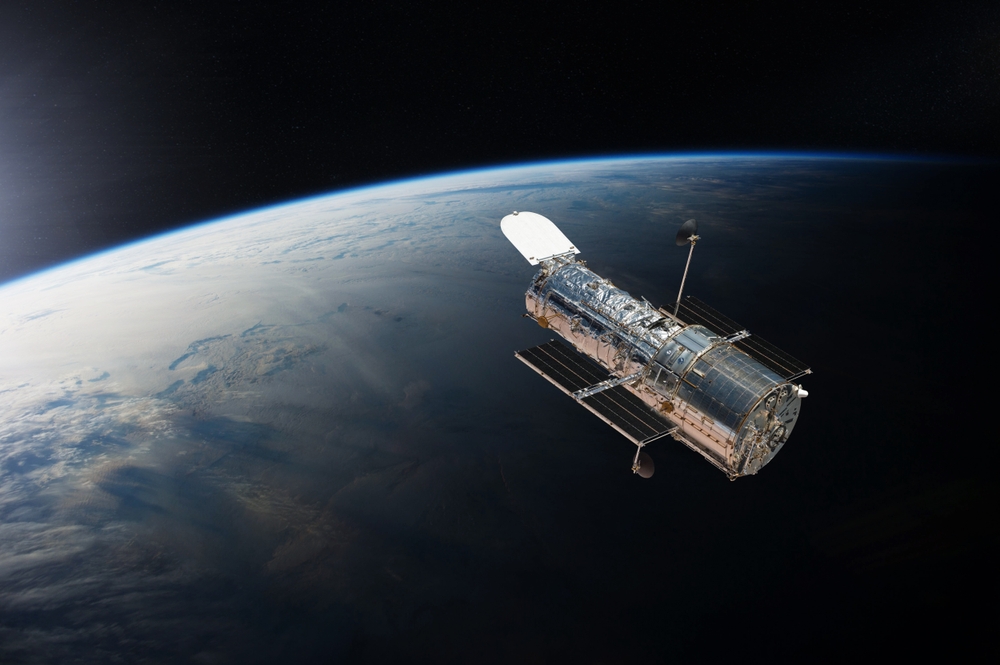How NASA Is Adapting To An Aging Hubble Telescope
Posted on Categories Discover Magazine

The Hubble telescope, which has served as an incredibly advanced window into the universe for over thirty years, has recently struggled with several less-than-stellar service disruptions.
But, NASA officials insist, the telescope’s legacy is far from finished — and it’s projected to remain active well into the next decade.
Over the past six months, Hubble has repeatedly experienced technological malfunctions, causing the telescope to enter “safe mode” and temporarily pause viewing as scientists on the ground work to repair issues from afar. Almost all of these service disruptions have resulted from a failing gyroscope, a device that controls the direction in which the telescope is pointed and measures its turning rate.
The telescope was outfitted with six new gyros during NASA’s “fifth and final” in-person repair mission in 2009. But today, just three of those gyros are still functional, including the one gyro that has repeatedly malfunctioned and caused disruptions to Hubble’s detection abilities.
Faced in June with a crucial crossroads for Hubble’s survival, NASA opted to continue operating Hubble using just one of the remaining gyros. What the telescope may lose in scientific capability, it will gain in longevity and consistency, officials said at a June 4 press conference.
“Operationally, we believe this is the best approach to support Hubble’s science through this decade and into the next since most of the observations it takes will be completely unaffected by this change,” said Mark Clampin, the director of NASA’s astrophysics division.
How Does One-Gyro Mode Work?
At most other points during its operational history, Hubble has used three gyros at once, keeping three additional gyros on board as backups. The more gyros that are in action, the more quickly and accurately the telescope can direct itself to take in high-resolution images of faraway celestial objects.
Using just one gyro will bring “minor limitations” to Hubble’s capabilities, according to a June 14 press release. With just one device to measure its turning rates, the telescope won’t be able to turn as quickly and accurately, potentially limiting the number of astrological events it can capture.
Still, Hubble will remain operational. It operated successfully with two gyros from 2005 to 2008 and saw virtually no changes to its detection abilities, scientists noted at the press conference.
The telescope will use just one of its remaining gyros for regular operation, while the other will remain in reserve for future use. Scientists say that using just one gyro at a time could prolong the telescope’s lifespan and that they remain hopeful for the possibility of repairing the third, malfunctioning gyro and bringing it back into commission soon.
Read More: The Many Resurrections of the Hubble Space Telescope
Will NASA Attempt To Repair Hubble?
The main alternative to operating with one gyro would be sending another repair mission into space, allowing astronauts to replace the aging gyros with new ones. While it’s a possibility that the agency has long considered, it seems that it won’t be happening anytime soon.
In 2022, billionaire entrepreneur Jared Isaacman offered to fund a mission to Hubble as a part of his Polaris Program, a series of private space missions running on SpaceX hardware. The program is planning to launch Polaris Dawn, the first-ever privately operated in-person spacewalk, as soon as late 2024, and Isaacman’s Hubble proposal would be another landmark spacewalk in commercial space history.
But at the June 4 press conference, NASA representatives announced they had rejected Isaacman’s offer, maintaining that they wouldn’t be launching a commercially — or federally-funded mission to repair or reboost Hubble.
“While the reboost is an option for the future, we believe we need to do some additional research to determine whether the long-term science return will outweigh the short-term science risk,” Clampin said.
Isaacman’s offer came in response to a Request For Information issued by NASA in late 2022, in which the agency sought proposals from commercial space companies to help re-boost aging satellites into orbit. The RFI specifically noted that NASA was considering contracting with a commercial company for a mission to Hubble in the near future.
Since the RFI closed in January 2023, NASA hasn’t shown any signs of sending a private mission to the telescope, and June’s decision to enter one-gyro mode confirms that they’ll likely move forward without the help of a commercial spacecraft.
Read More: The Hubble Telescope Has Shifted Into One-Gyro Mode After Months Of Technical Issues
How Much Longer Will Hubble Remain in Orbit?
Hubble’s exact lifespan still depends on a number of factors. But as drag from Earth’s atmosphere continues to pull the telescope down, it’s expected to eventually fall back into the atmosphere at some point in the 2030s. And without a reboost mission to propel the telescope back into orbit, the end of Hubble could come sooner rather than later.
Until then, though, NASA is determined to keep the iconic telescope in operation. Through in-person and on-the-ground maintenance projects, the agency has “nearly doubled the telescope’s lifespan” since its 1990 launch.
“Even without the reboost, we still expect Hubble to continue producing science through the rest of this decade and into the next,” Clampin said.
Read More: How Much Longer Will the Hubble Space Telescope Last?
Article Sources
Our writers at Discovermagazine.com use peer-reviewed studies and high-quality sources for our articles, and our editors review for scientific accuracy and editorial standards. Review the sources used below for this article: